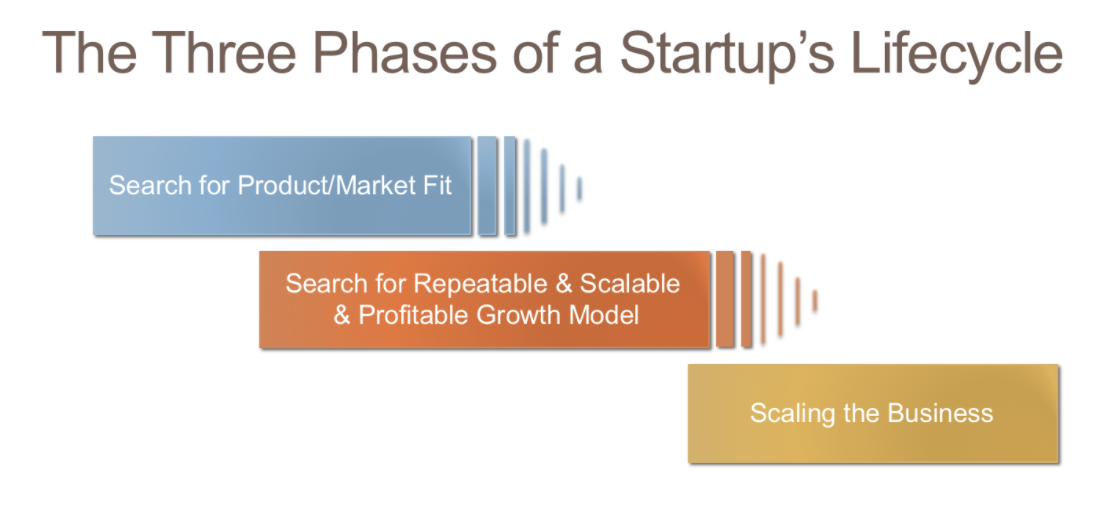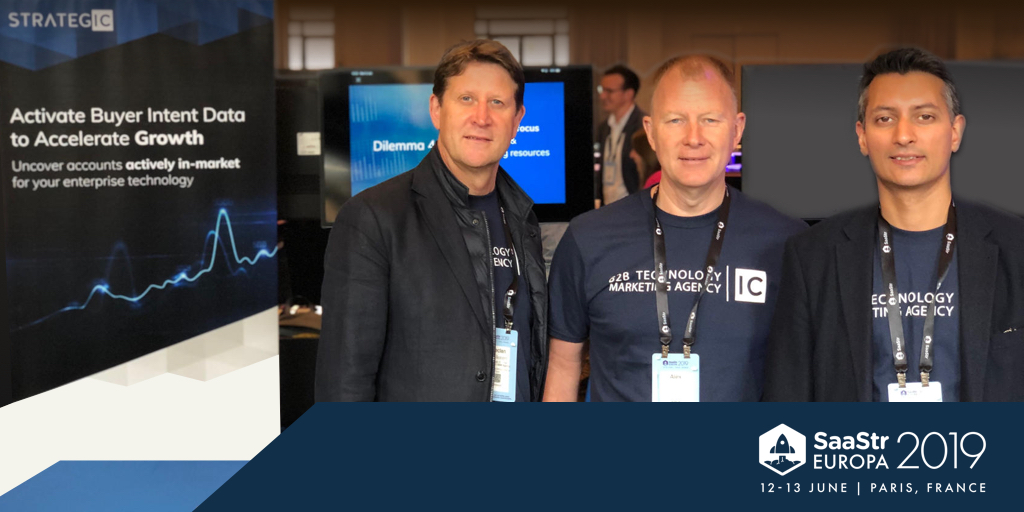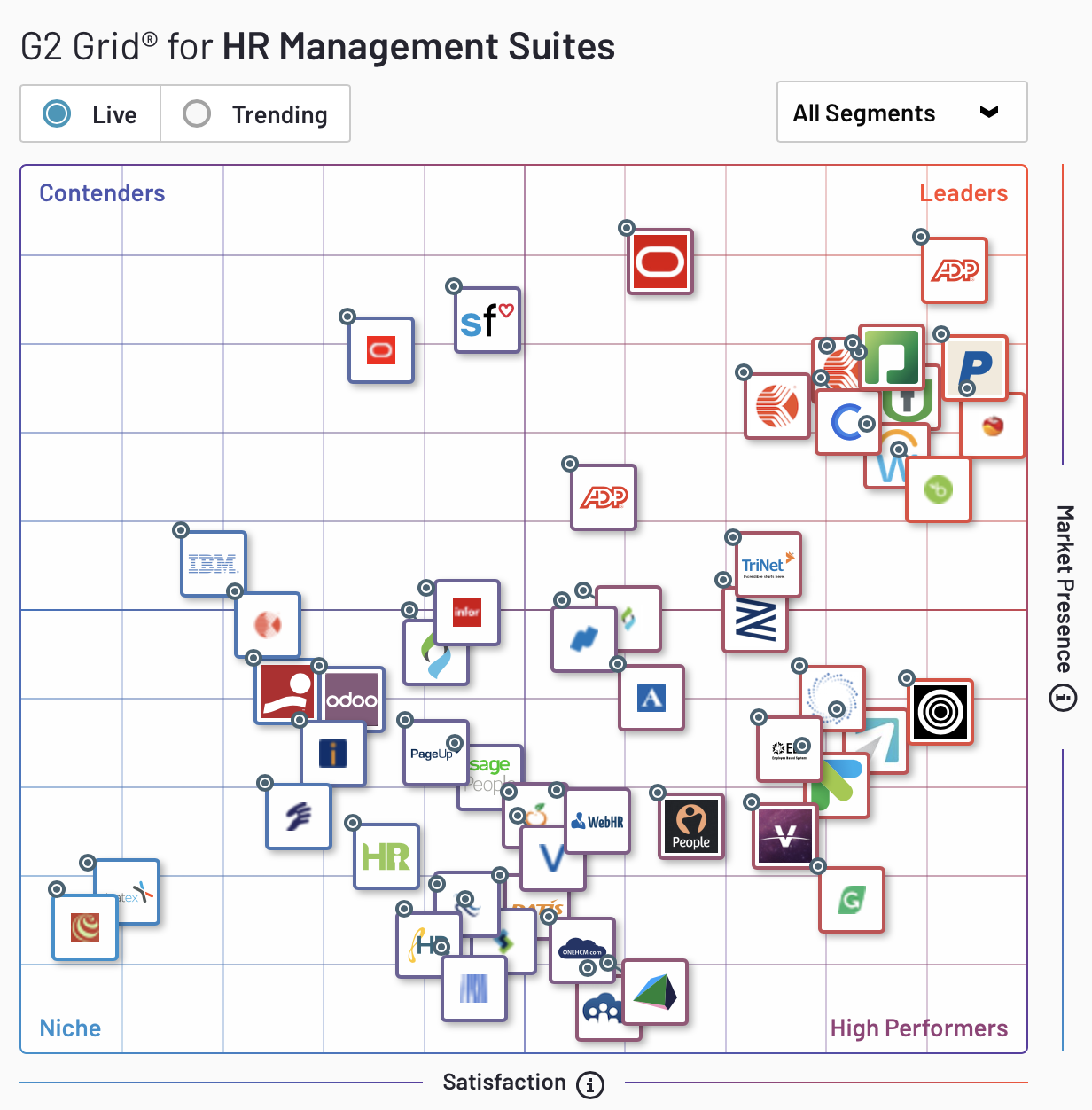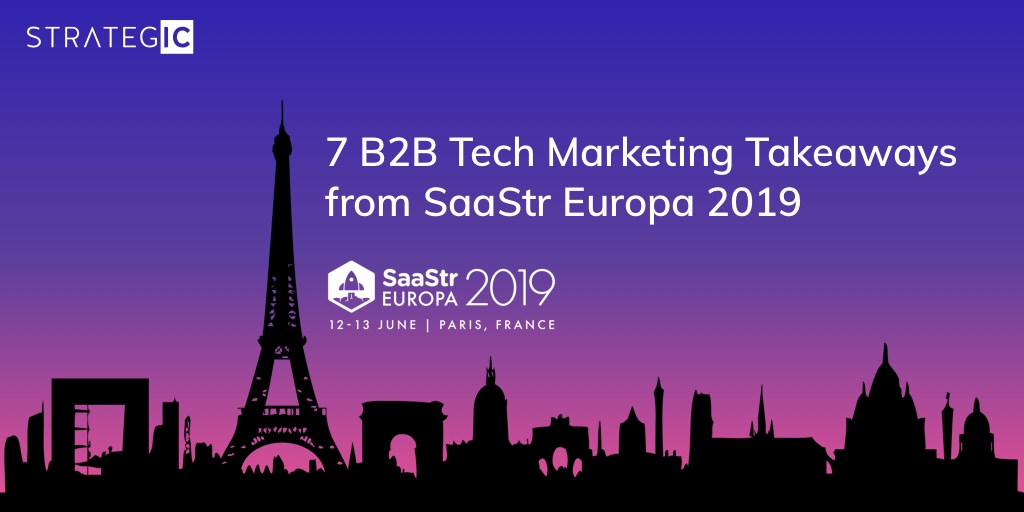After attending SaaStr Europa 2019 we outline key takeaways from the event, and where SaaS organisations should focus their efforts to achieve their growth objectives.
Discussing SaaS Growth at SaaStr Europa 2019
Last week saw some 2,500 VCs, CEOs, C-suite and sales and marketing professionals come together in Paris to talk all things SaaS and B2B Tech Marketing. With a formidable lineup of speakers, seminars, braindates and sponsors, SaaStr Europa 2019 was a truly unique learning and sharing opportunity for everyone involved in the SaaS ecosystem.
Over the course of the two days, the Strategic IC team discussed growth strategies with almost 100 SaaS companies with solutions as diverse as chatbots, payment platforms, and brand management.
While each company was naturally different with distinct solutions, technologies, growth stages and target markets, there were a number of common threads that united all the conversations we had with SaaS leaders on how they could achieve their growth objectives.
SaaStr Europa 2019 - Key Growth Takeaways
1. Consider - Outbound vs Inbound Lead Generation?
This was a recurring theme in our conversations. How should SaaS companies generate leads? Is Inbound the best way to go with content marketing, blogging, email campaigns, etc. or Outbound, via a “classic” sales team or other account-based marketing tactics?
Well, the answer to this is - it depends. There are many factors which would determine what percentage mix (and yes, the correct answer is both) is correct - such as where you are in your growth evolution (see below), whether you are an Enterprise SaaS and the resources (people and money) you can commit.

Image: ©2000-2019 Matrix Management Corporation
Inbound strategies take time to pay off (which you may not have), deliver “uncontrolled” leads which may lead to high disqualification rates, i.e. all locations, all company sizes, all industries, all types of Buyer Persona, etc.
Outbound, as the name suggests, means you are in control - you decide who to go after and with what resources. Inbound is unpredictable while Outbound (if you do it right - see point 4) is predictable.
The higher the Annual Contract Value (ACV), the more likely that Outbound tactics will deliver the predictable sales pipeline you need. Enterprise SaaS sales require multiple decision-maker buy-in, relationship building, long life cycles, etc. all of which form part of a solid Outbound strategy.
The only note of warning with Outbound is how you ensure your sales teams represent your brand and ensuring a solid customer-fit.
2. Adopt “Intelligent” Outbound - Account-Based Marketing
Following on from our conversations with SaaS leaders on the virtues of Inbound vs Outbound, the question of ‘how to do Outbound better or more intelligently’ was a common theme.
Account-Based Marketing or ABM was a concept relatively widely known by the SaaS entrepreneurs at the event, albeit that very few were actually running structured ABM campaigns. Many companies were following “tried and tested” target account list cold calling strategies with an outbound sales team.
Equally, those who were deploying ABM in their Outbound campaigns were not harnessing B2B Intent Data to identify target accounts that were actively in-market for their solutions.
It surprised many attendees that less than 5% of their addressable market were actively in “buyer mode” and that 95% of those companies that they were targeting would not be receptive to their offer.
With prioritisation and resource optimisation a common theme in many of our growth conversations, targeting those accounts (of your total addressable market) that are actively researching a relevant buyer challenge, or actually looking to buy, can deliver that sought-after predictable revenue.
It surprised many attendees that less than 5% of their addressable market were actively in “buyer mode” and that 95% of those companies that they were targeting would not be receptive to their offer.
After all, account-based sales & marketing is human-to-human interaction, focused (zero-waste) and has one overarching imperative - to deliver revenue.
3. Aim For Predictable Revenue
Our conversations with VCs, CEOs and CFOs revolved around how to accurately predict the success of Outbound sales and marketing strategies.
Accurate forecasting and predictable revenue pipelines were recurring challenges for many of the SaaS companies and VCs we spoke to. It was equally a challenge for sales and marketing leaders in order to justify (and warrant) investment and report the ROI to the C-suite and VCs.
Very few of the SaaS companies we spoke to were able to predict the success of their outbound marketing activities to any degree of accuracy due, in part, to the difficulty in attributing revenue generated to specific campaigns or actions.
Our experience has shown that predictable revenue (and cost attribution) is indeed possible if SaaS companies target their “Total Active Market”, i.e. those enterprises that are in an active buyer mode for a technology solution rather than their “Total Addressable Market”, i.e. those companies that in theory could be potential customers at some point in the next X years.
This approach has been demonstrated to deliver a far higher degree of sales pipeline and revenue accuracy and predictability as campaign conversion benchmarks (Lead to Revenue) are based on those accounts in an active buyer journey (for your technology). In essence, the predictability comes from real live data.
Our experience has shown that predictable revenue (and cost attribution) is indeed possible if SaaS companies target their “Total Active Market”, i.e. those enterprises that are in an active buyer mode for a technology solution rather than their “Total Addressable Market”
4. Find The Best Sales & Marketing Pairing for SaaS
We met many companies that had yet to hire their first VP of Marketing while they were deploying Outbound sales tactics to drive revenue growth. As Jason Lemkin of SaaStr quite rightly points out - you need to make sure you hire the right type of VP of Marketing who understands lead nurturing and demand generation programs and can work side-by-side with your sales team to generate a predictable (and growing) stream of qualified leads and sales - month-in-month-out. Otherwise, you’ll have some nice t-shirts and pens and an empty VP of Marketing desk very soon!

5. Uncover Insights that Drive Engagement
Without doubt our discussions on how to identify which target customers are actively in-market for a technology solution generated the most interest with SaaS leaders.
For the first time ever, SaaS companies are now able to shine a light on their “Total Addressable Market” and view which accounts are in an active buyer mode, at what stage of the buyer journey, and their level of intent.
These powerful intent data insights, when combined (and aligned) with a sales and marketing strategy can significantly accelerate the time to sales conversations thus enabling more predictable revenue streams.
Understanding your target market and how they research your technology segment can help you build a powerful keyword directory to help you align your messaging to each stage (and pain/challenge) of the buyer journey - be it early mid or late-stage.
ZMoTs - or Zero Moments of Truth truly come into play with Intent-driven campaigns. Knowing who, when and with what to strike can now provide sales and marketing teams with never seen before insight.
6. Prioritise Your Value Proposition
Understanding who your solution is of value to and why needs to be the laser focus for any SaaS organisation. Maintaining (and prioritising) that focus should be the mantra of everyone in your company. It was very interesting to see how many conversations gravitated towards understanding and defining what a “Best-fit” customer looks like and ensuring that all sales and marketing efforts were directed to winning accounts that fit this profile.

Image: © G2.com
Your business’ value proposition is arguably the most important piece of your marketing strategy and messaging. In such a crowded market place (as the G2 grid above shows, taking HR management software as an example), conveying clearly and succinctly to your target customers why they should choose you solution over dozens (or hundreds) of other solutions can often be the difference between success and failure.
Your business’ value proposition is arguably the most important piece of your marketing strategy and messaging.
7. Focus on Sales, Marketing and Customer Experience Alignment
Much has been written about alignment - particularly between Sales and Marketing. Point 4 shows the value when sales and marketing are aligned. What is equally important is developing thoroughly tried and tested processes that are scalable and fully optimised to deliver predictable revenue.
SaaStr Europa 2019 provided a unique opportunity for all of us involved in this fascinating industry to share ideas and learn best practices on how to grow our SaaS businesses. Here’s to a successful year and see you all at SaaStr Europa 2020!






